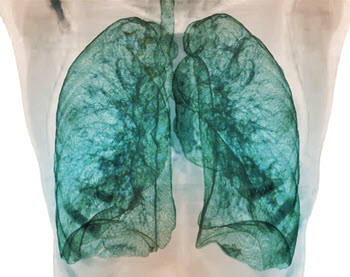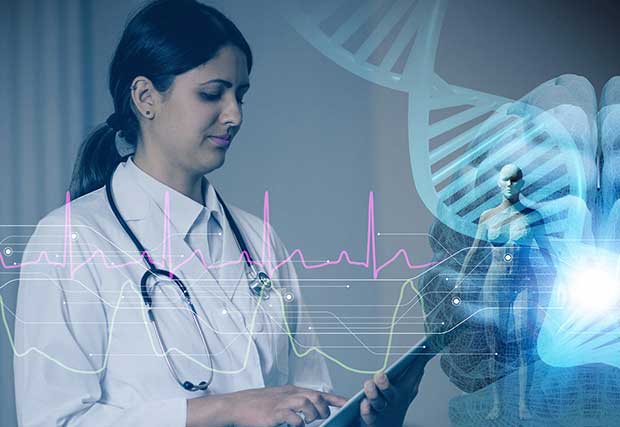Will disruptive healthcare technologies disrupt hospital networks?
Two newborns are delivered on the same day by the same doctor in the same hospital. The truth is, the decisions their respective parents are about to make can have an enormous impact on their daughters’ health and quality of life for the next several decades.
Sarah and Lisa
The parents of one girl –let’s call her Sarah, will opt to follow the general regimen throughout her life of newborn screening, wellness visits and adhoc consultations. Whenever she gets sick or if later in life is diagnosed with a chronic condition, her doctor will prescribe the same medicine and treatment that is recommended for all patients with the same disease.
The other baby girl – let’s call her Lisa – has parents that researched the evolving field of precision medicine. They decided to have a swab of her DNA taken and sequenced to map out her entire genetic code. When combined with cognitive computing and data analytics, this whole genome sequencing procedure may be able to predict the diseases she may be most susceptible in the future, and prescribe treatments based on the specifics of her body, genetics and the disease proclivity.

Throughout her life she uses healthcare systems that integrate artificial intelligence (AI) and machine learning (ML) into their practices. They combine all previously recorded medical data with information from Lisa’s wearable and at-home devices, diet and lifestyle habits. Algorithms and neural networks will be able to augment clinician opinions to improve the accuracy of diagnosis, and recommend personalized treatments or life style changes.
Which girl will eventually live longer, Sarah or Lisa? Which will enjoy a healthier, more active life? Who is more likely to have healthier offspring? These questions and innovative solutions in the form of genome sequencing (WGS) artificial intelligence (AI), machine learning (ML), robotics and connected health were at the forefront of discussion during the recent HIMSS 2018 conference.
Looming Data Explosion
In his opening keynote, former Google CEO Eric Schmidt pointed out that patients like Sarah and Lisa have an average of 5Gbps of healthcare data at any one time, mostly in the form of medical images. In Lisa’s case, Genome sequencing produces extremely large file sizes, ranging from 6 Gigabit for a basic Exome at 4x coverage, to 138 Gigabit for Whole Genome at 38.4x coverage.
Genome sequencing produces extremely large file sizes, ranging from 6 Gigabit for a basic Exome at 4x coverage, to 138 Gigabit for Whole Genome at 38.4x coverage.
If either girl is admitted to a hospital, Schmidt claimed that they will have “at least 150 thousand observations per day between humans and machines”. All that data needs to be incorporated into an electronic health record, shared among the patient’s treatment team, tracked and stored.
Schmidt challenged the audience to ponder the impact of a combination of health sensors, in-home monitoring devices, wearables, molecular results and behavioral data captured from the patient’s smartphone. He presented the audience with a formula to deal with this avalanche of constantly updated patient data:

Don’t forget about the connectivity
Throughout the four days of the show there was plenty of focus on the “compute” and “cloud” portions of the equation. In the exhibit halls the vendors of these solutions were jammed with visitors.
From my perspective there was a lack of focus on the “connectivity” portion. A goal of AI and ML is to push the computing as close to the point of care or edge device as possible. The theory is that algorithms adjust or “learn” based upon pattern variations detected in reams of unstructured data. But the data is accessed from multiple sources. These can include the patient monitoring devices, wearables, electronic health records and smartphones. Other sources are accessed in the data centers of research centers, laboratories, hospitals and government agencies.
These technologies achieve their full potential when the data is shared across the spectrum of clinicians.
 Much of the data is low bandwidth, textual and non-latency sensitive. Other files such as whole genomicsequencing and 3-D imaging are massive and very latency-sensitive. I do recall a comment made by the presenter who was discussing migration to a hybrid cloud environment “never underestimate the impact on your bandwidth when you go from 2D imaging to 3D”.
Much of the data is low bandwidth, textual and non-latency sensitive. Other files such as whole genomicsequencing and 3-D imaging are massive and very latency-sensitive. I do recall a comment made by the presenter who was discussing migration to a hybrid cloud environment “never underestimate the impact on your bandwidth when you go from 2D imaging to 3D”.
These technologies achieve their full potential when the data is shared across the spectrum of clinicians that patients like Lisa will have on her care team throughout her life. The promise of AI and ML lay in the algorithm’s ability to “learn” from changes in Lisa’s medical data and breakthroughs in medical research, predict their effect on her future condition and aid her clinician to vary her treatment.
Can the static networks of today meet the needs of this new healthcare paradigm?
The advancement of edge computing, personal medical devices and the Internet of Things to support AI and ML will likely require a change in the way we think about networks. Some of the data flows from digital medical applications like wearables and remote monitoring devices may be small, while others like advanced medical imaging and genome sequencing can be very large. Network operators will also have to take into consideration that some applications used for split-second accurate diagnosis are extremely latency-sensitive, while others may be less so.
Networks will also have to be able to support sudden spikes in network traffic when epidemics or mass-casualty events can increase network traffic far more than the norm. And for AI and ML to be useful doctors will need to have confidence that the applications can access the necessary real-time data based upon changes in the patient’s conditions.
The advancement of edge computing, personal medical devices and the Internet of Things to support artificial intelligence and machine learning will likely require a change in the way we think about networks.
To address these changing dynamics network operators may need to incorporate AI-driven software-defined network (SDN) and programmable infrastructure to make their networks are more adaptable. Hospital systems that have a hybrid private core network with managed services connectivity to clinics can also look to these new network technologies to make their WAN as adaptable as the AI and ML medical platforms.
The health and well-being of babies like Lisa in the new “womb to tomb” paradigm of healthcare, may very well depend on it.





